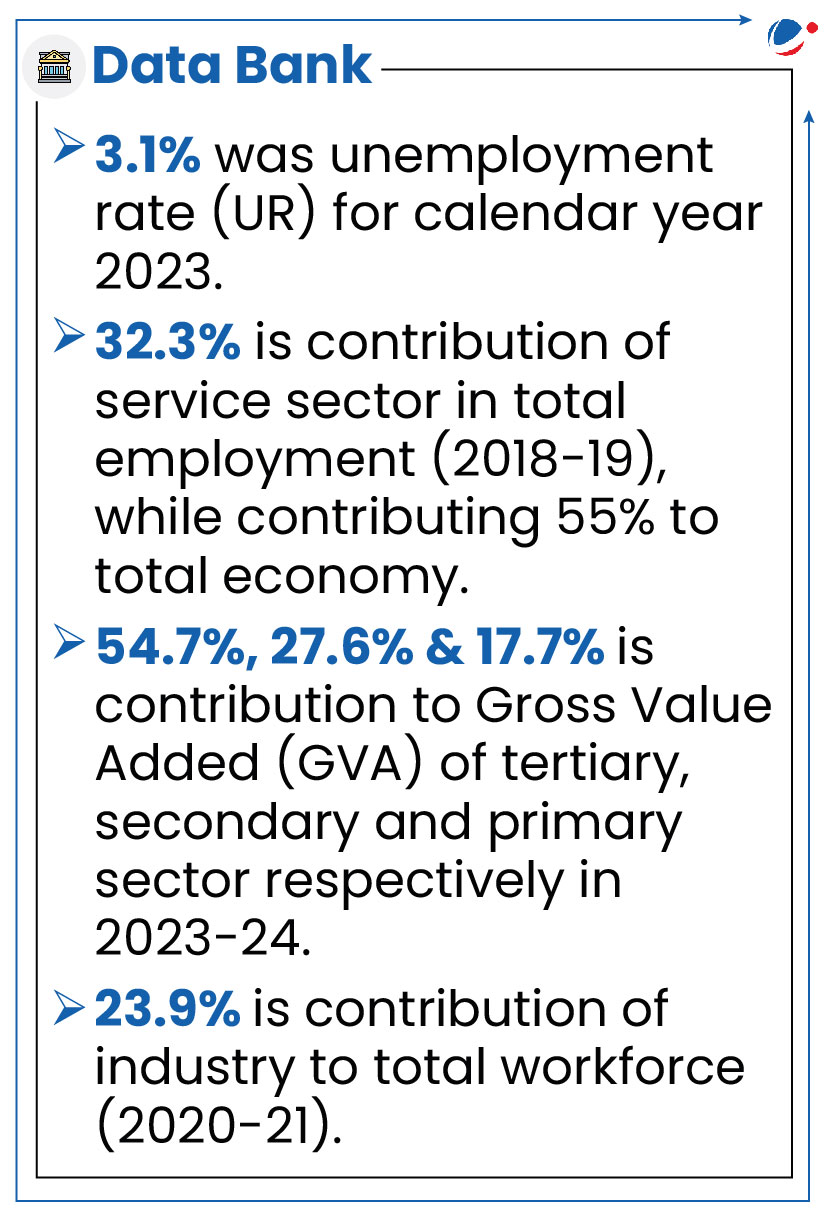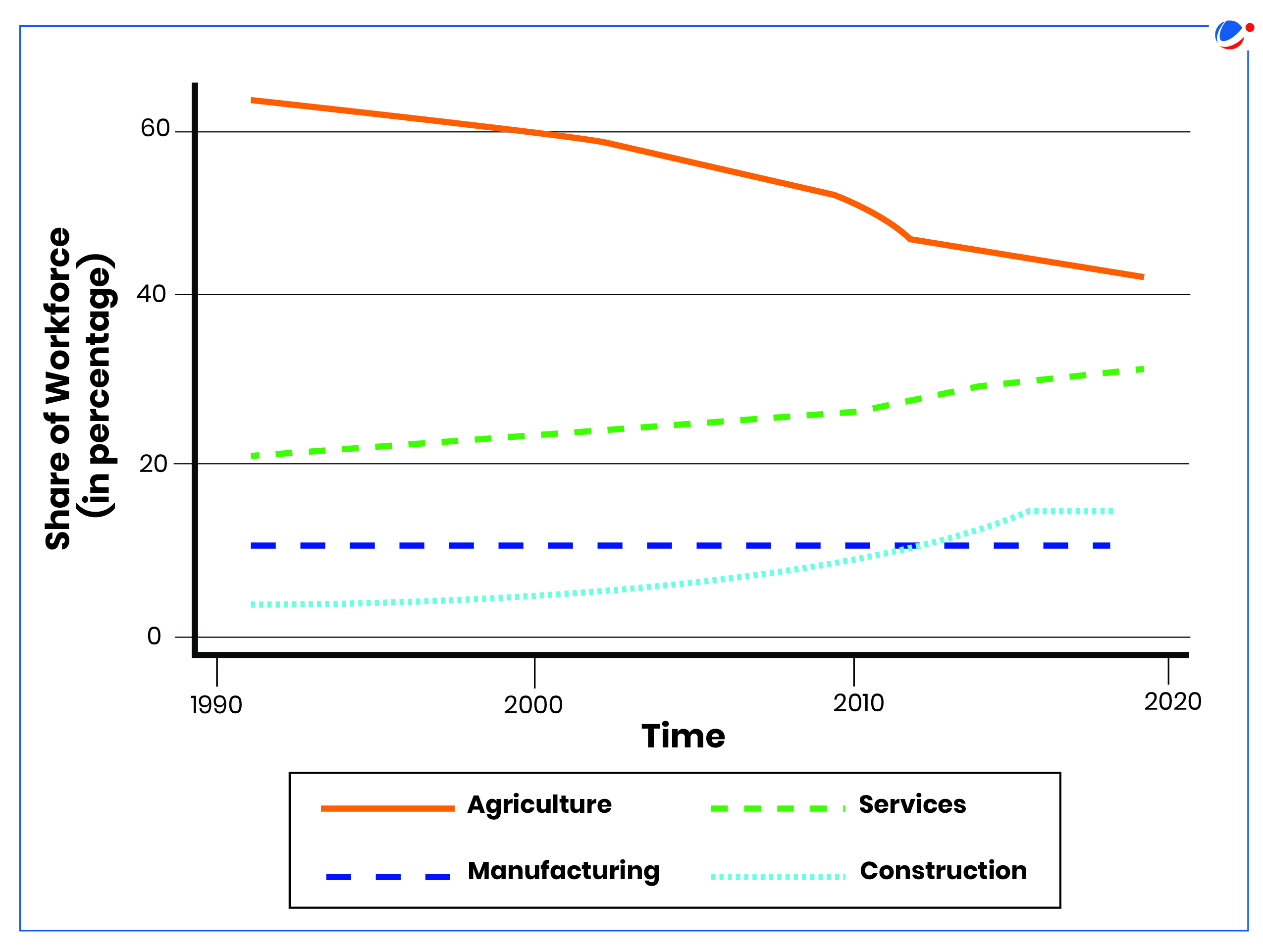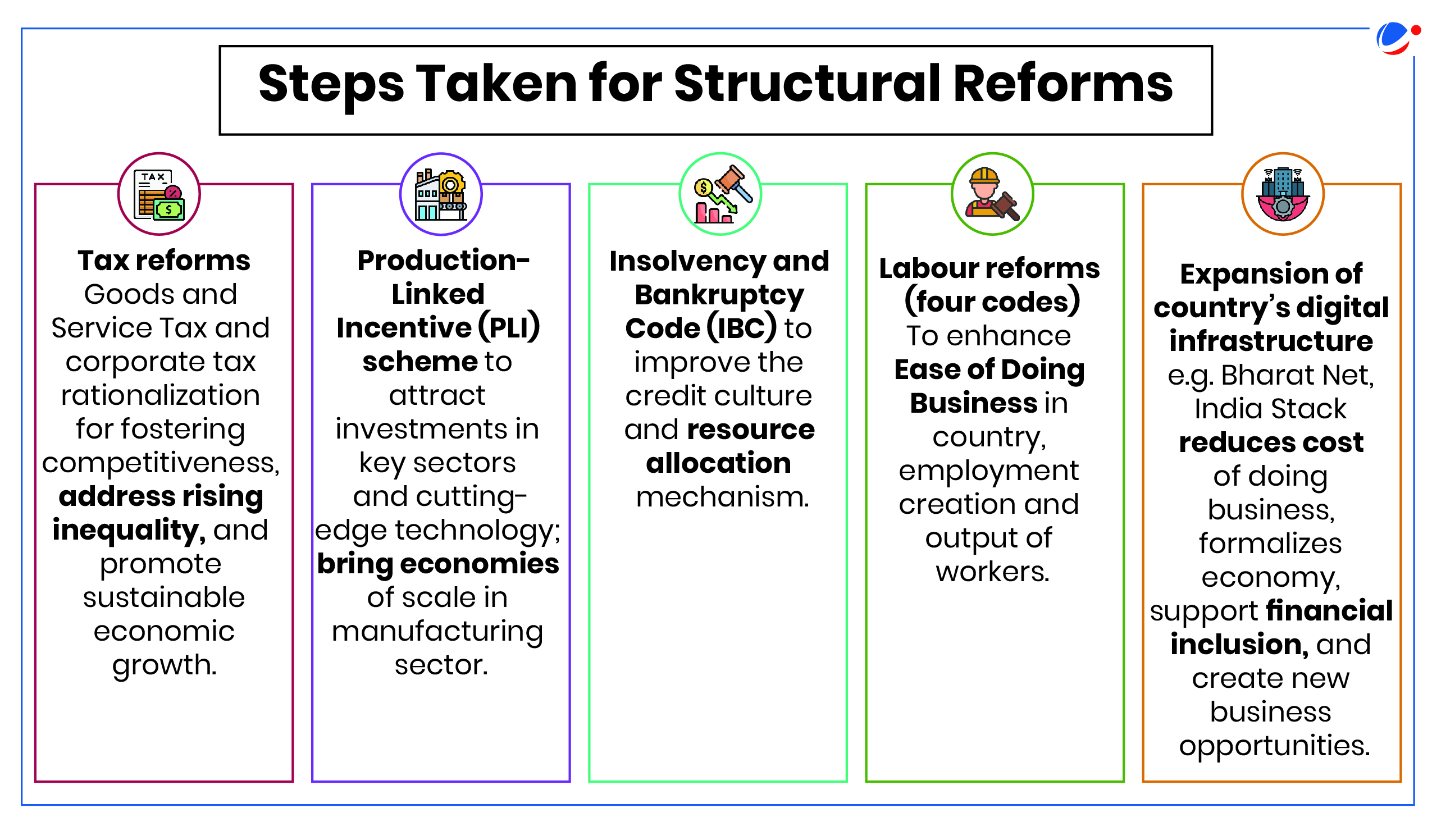Why in the news?
IMF released a Working Paper titled 'Advancing India's Structural Transformation and Catch-up to the Technology Frontier'.

More on News:
- Paper takes stock of India's growth and suggests structural reforms that can help accelerate growth in India.
- India experienced robust economic growth over the past few decades, averaging over 6% real GDP growth since 2000. However, this growth has not translated evenly across all sectors.
Structural Transformation: Transition of an economy from low productivity and labour-intensive economic activities to higher productivity and skill-intensive activities.
Indicators of Structural Transformation
- Shift from agriculture: Resources (Labour, Capital, and Technology) in the economy are shifted out of low-productivity primary activities (E.g., Agriculture) into modern, higher-productivity sectors (E.g. Services).
- Sectorial distribution: It means a higher share of manufacturing and service sectors in an economy.
- It is typically measured through employment distribution, value-added distribution and final consumption expenditure distribution.
- Capital accumulation: Accumulation of physical and human capital, and changes in composition of demand, production, employment and trade.
- Migration: Rural-to-urban migration underpinned by rural and urban development.
- Demographic transition: From high rates of births and deaths (common in underdeveloped and rural areas) to low rates of births and deaths (Common in developed and urban areas).
Status of India's Structural Transformation:
|

Key Issues Highlighted by paper in India's structural Transformation:
- Sectorial Imbalance: Aggregate output of agriculture has declined from over 40% in 1980 to 15% in 2019, it still accounts for 42% of employment.
- Uneven tech-adoption by industries: Services outperformed manufacturing in catch-up to technological frontier.
- Rise of low skill jobs: Construction has also become an important employer, with about 12 percent of workers in 2019.
- Low Productivity: Manufacturing sector growth has remained sluggish and over half of all workers remain in low productivity jobs in agriculture, construction, and trade
- Labour in 2019-20 in manufacturing and services was over 4.5 times more productive than in agriculture.
- Paper estimates that India needs at least 143-324 million jobs for its growing population by 2050.
Key Policy Recommendations:
- Strengthening Education and Skilling: Improving quality of education and providing vocational training can help workers transition to higher productivity sectors.
- India's labor force still has fewer years of formal education than peers and quality of its education remains low (ASER, 2023).
- Advancing Labor Market Reforms: Working with states to loosen restrictive employment protection legislation would be essential to further enhance labor market flexibility.
- Fostering Trade Integration: Enhancing trade policies e.g. Signing bilateral trade agreements, removing tariff and non-tariff restrictions to integrate with global markets.
- Removing Red Tape: Simplifying regulations and reducing bureaucratic hurdles can spur private sector growth, leading to more job creation.
- Continued Public investment Push: Stronger physical public infrastructure, together with India's world class digital public infrastructure, will help increase productivity of private sector.
- Others: Strengthening Social Safety Net, Facilitating Access to Credit for small and medium enterprises, etc.



